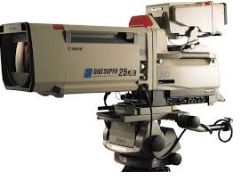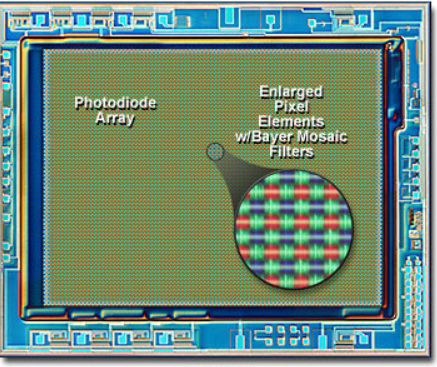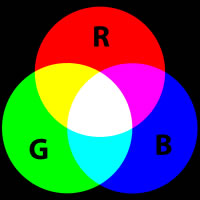Ed's
AV Handbook
Batting Practice for the AV Professional
and primer for the novice
Chapter
4 Page 1
Video Reproduction
The view from the mind's eye
Our brain seeks to make the
universe orderly. For example, a still picture can be
sliced and diced into an array of small dots or pixels.
If you stand back, our brain reassembles the dots as a
coherent image of the original picture. A photo in a
daily newspaper illustrates this effect.
Divide a moving scene into a sequence of still images. Then repeat the image sequence at a fast rate. If fast enough, our brain perceives the 'stills' as a moving motion picture. This process is employed to construct animation, movies, and television.
Our mind's eye also recognizes a rainbow of color from a mix of only three-primary-colors of light, red, green, and blue.
Mixing the three colors allows television engineers to produce a great range of visible-color.
Handbook Note: A photodiode converts light to electrical current.
Divide a moving scene into a sequence of still images. Then repeat the image sequence at a fast rate. If fast enough, our brain perceives the 'stills' as a moving motion picture. This process is employed to construct animation, movies, and television.
Our mind's eye also recognizes a rainbow of color from a mix of only three-primary-colors of light, red, green, and blue.
Mixing the three colors allows television engineers to produce a great range of visible-color.
Handbook Note: A photodiode converts light to electrical current.
The TV Camera
A TV camera divides a moving image into a sequence of still
picture frames. Similar to a newspaper photo, each still
frame divides into pixel dots of light. The sequence of
images begins as a TV camera lens focuses its light on the
photo-diode array of a charged-coupled-devise or CCD.
CCD photo-diodes convert light to electrical current.
Each sub-pixel or photo-site of the CCD array filter passes
its assigned color -- red, green, or blue. 
The CCD electronically scans the array at 60* frames per second -- left to right, line by line, photo-diode by photo-diode, top to bottom. Each photo-diode of streaming electric current is a modulating analog of the original red, green, or blue light. The modulating streams ultimately convert back into illuminated pixel arrays of the original image sequence of still frames on the television screen.
*Handbook Note:
The C.I.E. Rec 2020 UltraHDTV
specification added the frame rate option of 120 frames per
second.
Copyright 2007 Txu1-598-288 Revised 2024
Sponsored
By

Architectural Speaker Tuning System

Architectural Speaker Tuning System
for
in-wall/ceiling custom installed speakers.
Reclaim the performance you paid for.
Site Menu
Home
Table of
Contents
AV News & Blog
Handbook Chapters
1 AV
Terms
2 AV Physics
3 Sound Reproduction
4 Video Reproduction
5 The AV System Sequence
6 The Room, Speaker, & TV
7 Acoustical Strategy - Small Room
8 Home Theater by Design
9 AV Sales Training
10 AV Business & Marketing
Contact
About
